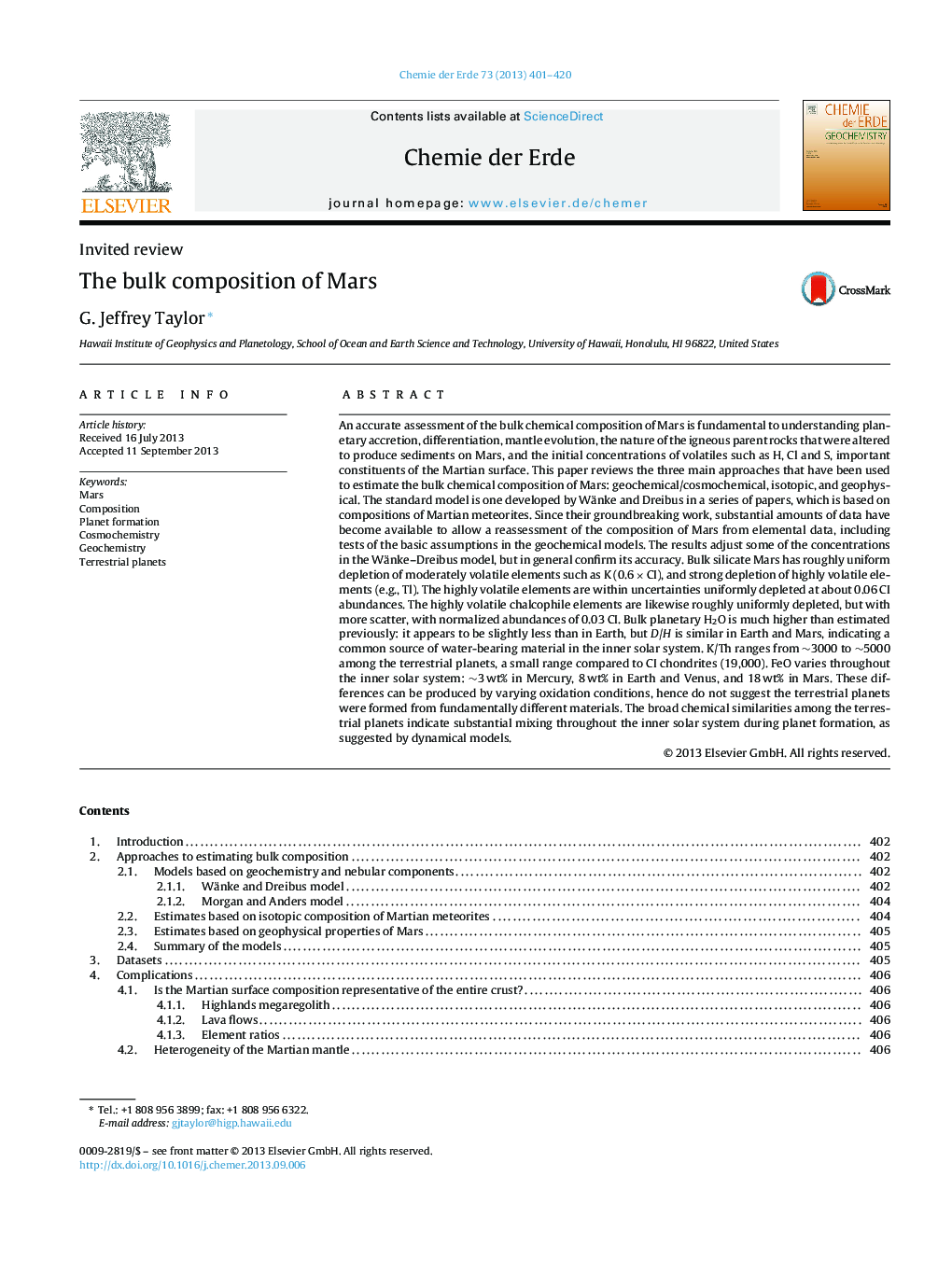| کد مقاله | کد نشریه | سال انتشار | مقاله انگلیسی | نسخه تمام متن |
|---|---|---|---|---|
| 4406979 | 1307336 | 2013 | 20 صفحه PDF | دانلود رایگان |

An accurate assessment of the bulk chemical composition of Mars is fundamental to understanding planetary accretion, differentiation, mantle evolution, the nature of the igneous parent rocks that were altered to produce sediments on Mars, and the initial concentrations of volatiles such as H, Cl and S, important constituents of the Martian surface. This paper reviews the three main approaches that have been used to estimate the bulk chemical composition of Mars: geochemical/cosmochemical, isotopic, and geophysical. The standard model is one developed by Wänke and Dreibus in a series of papers, which is based on compositions of Martian meteorites. Since their groundbreaking work, substantial amounts of data have become available to allow a reassessment of the composition of Mars from elemental data, including tests of the basic assumptions in the geochemical models. The results adjust some of the concentrations in the Wänke–Dreibus model, but in general confirm its accuracy. Bulk silicate Mars has roughly uniform depletion of moderately volatile elements such as K (0.6 × CI), and strong depletion of highly volatile elements (e.g., Tl). The highly volatile elements are within uncertainties uniformly depleted at about 0.06 CI abundances. The highly volatile chalcophile elements are likewise roughly uniformly depleted, but with more scatter, with normalized abundances of 0.03 CI. Bulk planetary H2O is much higher than estimated previously: it appears to be slightly less than in Earth, but D/H is similar in Earth and Mars, indicating a common source of water-bearing material in the inner solar system. K/Th ranges from ∼3000 to ∼5000 among the terrestrial planets, a small range compared to CI chondrites (19,000). FeO varies throughout the inner solar system: ∼3 wt% in Mercury, 8 wt% in Earth and Venus, and 18 wt% in Mars. These differences can be produced by varying oxidation conditions, hence do not suggest the terrestrial planets were formed from fundamentally different materials. The broad chemical similarities among the terrestrial planets indicate substantial mixing throughout the inner solar system during planet formation, as suggested by dynamical models.
Journal: Chemie der Erde - Geochemistry - Volume 73, Issue 4, December 2013, Pages 401–420